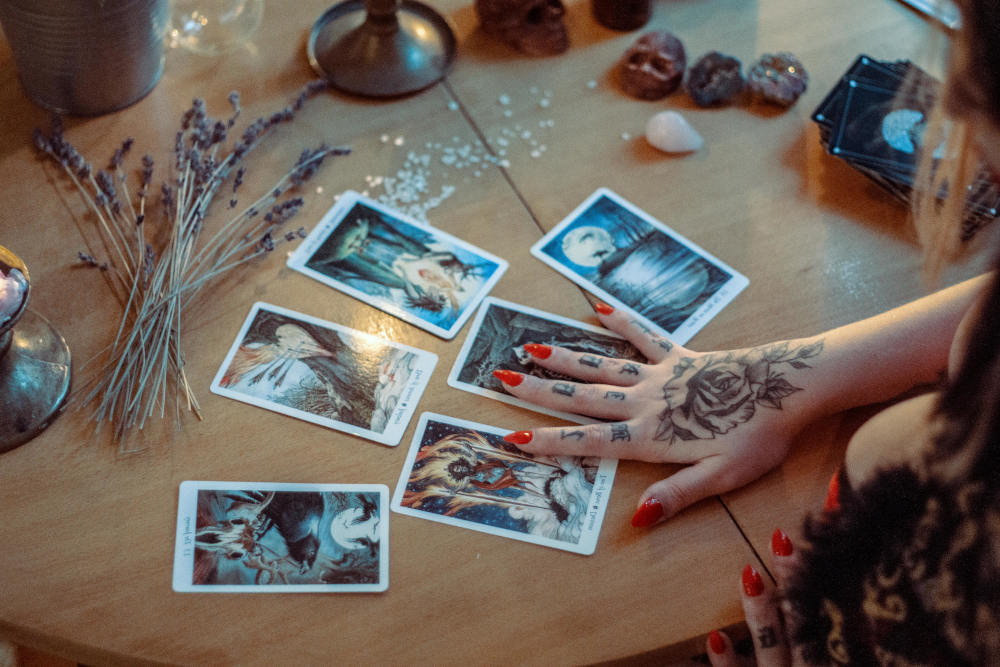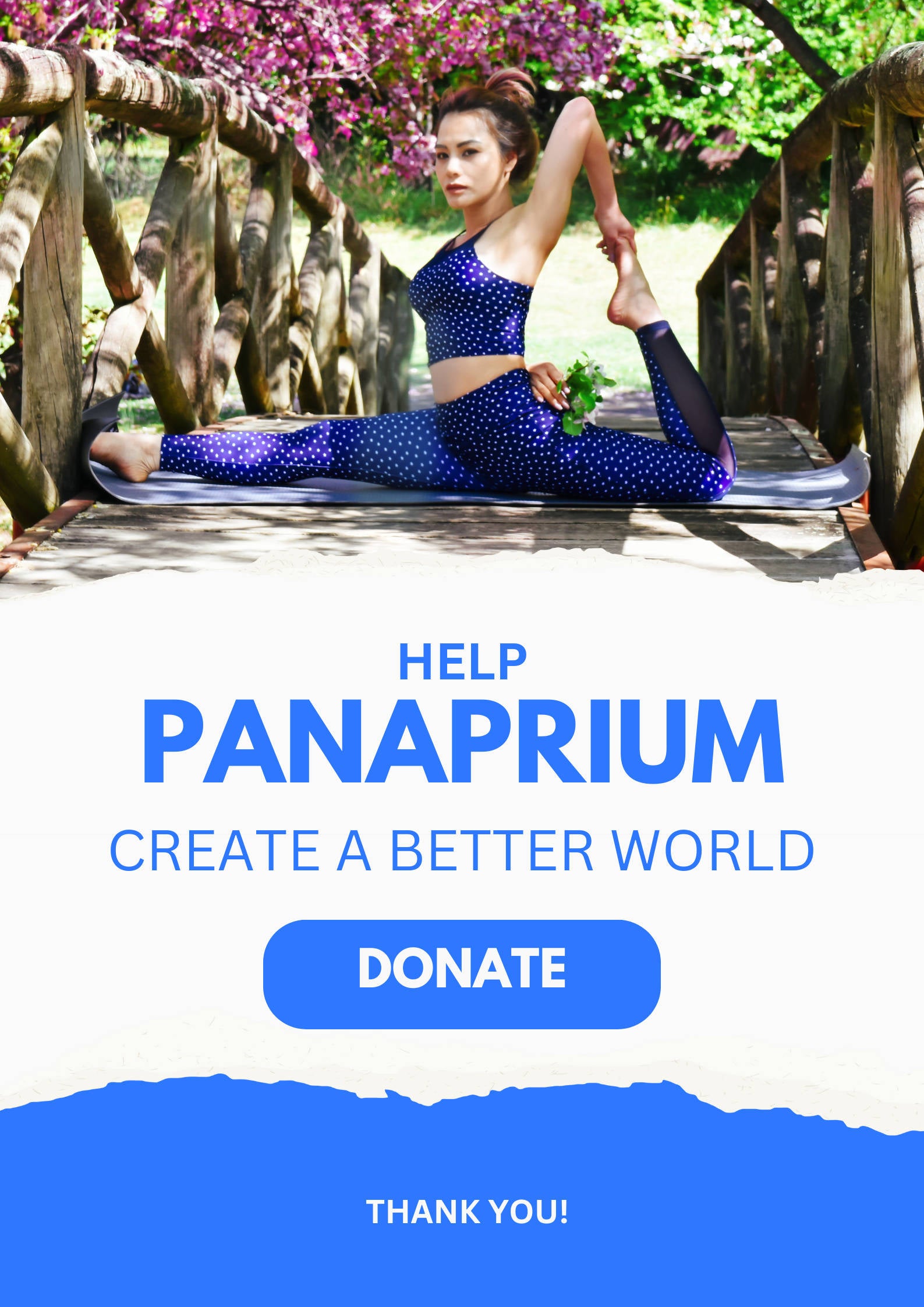
Dans l'univers des outils spirituels et de l'intuition, le tarot, l'oracle et les cartes angéliques offrent chacun des moyens uniques de se connecter à la sagesse supérieure. Bien que souvent regroupés, ces trois types de jeux de divination se distinguent par leur structure, leur objectif et leur style de lecture. Que vous recherchiez la clarté, l'introspection ou des messages d'un monde supérieur, comprendre leurs différences peut vous aider à choisir l'outil idéal pour votre cheminement.
Panaprium est indépendant et pris en charge par les lecteurs. Si vous achetez quelque chose via notre lien, nous pouvons gagner une commission. Si vous le pouvez, veuillez nous soutenir sur une base mensuelle. La mise en place prend moins d'une minute et vous aurez un impact important chaque mois. Merci!
Que sont les cartes de tarot ?
Structure et histoire
Les cartes de tarot ont une histoire longue et complexe qui remonte au XVe siècle en Europe. Initialement conçues comme des cartes à jouer, elles sont devenues des outils de divination au XVIIIe siècle. Un jeu de tarot traditionnel contient 78 cartes , divisées en deux parties principales :
-
Arcanes majeurs (22 cartes) : Ils représentent des événements majeurs de la vie, des leçons spirituelles et des archétypes tels que Le Fou, Les Amants ou la Mort.
-
Arcanes mineurs (56 cartes) : Ils sont divisés en quatre couleurs : Coupes, Pentacles, Épées et Bâtons, chacune avec 14 cartes, y compris des cartes de cour et des cartes numérotées, reflétant les expériences quotidiennes.
Symbolisme et utilisation
Les cartes de tarot sont profondément symboliques et structurées. Chaque carte possède une signification spécifique influencée par l'astrologie, la numérologie, la mythologie et la psychologie. Cela fait du tarot un excellent outil pour une introspection profonde , la prise de décisions complexes et la gestion des difficultés de la vie .
La plupart des tirages de tarot sont basés sur des tirages , c'est-à-dire des dispositions qui attribuent une signification à la position de chaque carte. Parmi les tirages les plus courants, on trouve le tirage passé-présent-futur à trois cartes ou la croix celtique, plus élaborée.
Idéal pour
-
Les personnes qui aiment la structure et le symbolisme riche
-
Ceux qui s'intéressent à la croissance spirituelle et à l'orientation de vie
-
Les lecteurs qui cherchent à approfondir leurs schémas subconscients
Que sont les cartes Oracle ?
Structure et flexibilité
Contrairement au Tarot, les cartes d'oracle n'ont pas de structure fixe . Chaque jeu d'oracle est unique, avec ses propres thèmes, son propre nombre de cartes et son propre style artistique. Certains jeux comptent 30 cartes, d'autres 60 ou plus. Les cartes peuvent se concentrer sur des sujets aussi variés que les chakras, les phases lunaires, les animaux spirituels, les affirmations ou la guérison émotionnelle.
Grâce à leur flexibilité, les cartes oracle sont plus faciles à utiliser pour les débutants. Elles ne nécessitent pas la mémorisation d'un système spécifique ni l'apprentissage de dispositions formelles.
Style et utilisation
Les cartes oracles sont généralement plus intuitives et fluides . Elles sont utilisées pour apporter un éclairage, des encouragements ou de l'inspiration. Chaque carte est généralement accompagnée d'un message ou d'une affirmation, et le guide qui l'accompagne (le cas échéant) propose des interprétations.
Les lectures d'oracle peuvent être aussi simples que de tirer une seule carte pour la journée ou d'en combiner plusieurs pour un message plus large.
Idéal pour
-
Débutants et lecteurs occasionnels
-
Soutien émotionnel et inspiration intuitive
-
Les personnes qui veulent des messages spirituels sans complexité
Que sont les cartes des anges ?
Communication divine
Les cartes angéliques sont un type spécifique de jeu d'oracle conçu pour connecter les utilisateurs à des êtres divins, notamment des anges, des archanges ou des maîtres ascensionnés. Ces jeux mettent souvent l'accent sur le réconfort, la protection, la guérison et la guidance divine .
Popularisées par des enseignants spirituels comme Doreen Virtue à la fin des années 1990, les cartes angéliques visent à transmettre des messages qui élèvent et rassurent, souvent en mettant fortement l'accent sur l'amour inconditionnel et le timing divin.
Structure et thèmes
Comme les autres jeux d'oracle, les jeux de cartes angéliques varient en taille et en format. Leur singularité réside dans leur orientation spirituelle . Chaque carte contient généralement un message d'un ange ou d'un être spirituel spécifique, accompagné d'une description de sa signification ou de ses conseils.
Les cartes angéliques sont souvent utilisées lors des prières, des méditations et des séances de guérison énergétique. Leur ton est généralement plus doux que celui du Tarot ou même des jeux d'oracles classiques.
Idéal pour
-
Ceux qui sont attirés par la guidance angélique ou divine
-
Les personnes à la recherche de réconfort ou de réconfort spirituel
-
Travailleurs de l'énergie, guérisseurs ou travailleurs de la lumière
Différences clés en un coup d'œil
| Fonctionnalité | Cartes de tarot | Cartes Oracle | Cartes d'ange |
|---|---|---|---|
| Structure | Fixe (78 cartes) | Flexible (variable) | Flexible (variable) |
| Origine | XVe siècle | Outil spirituel moderne | Fin du XXe siècle |
| Symbolisme | Archétypes, costumes, astrologie | Cela dépend du thème | Les anges, messages divins |
| Tonifier | Équilibré, peut être intense | Édifiant ou réfléchi | Réconfortant, doux |
| Courbe d'apprentissage | Élevé (nécessite des études) | Faible (intuitif) | Faible (intuitif) |
| Idéal pour | Perspectives profondes, conseils sur le chemin de vie | Inspiration, émotions | Messages spirituels, guérison |
Comment choisir le bon deck
1. Votre intention
Demandez-vous : qu'espérez-vous obtenir de votre consultation ? Si vous recherchez des perspectives spirituelles ou psychologiques profondes , le tarot pourrait être la solution idéale. Si vous avez besoin d'inspiration quotidienne ou de clarté émotionnelle , un jeu d'oracle pourrait vous être plus utile. Si vous recherchez une guidance douce et une assurance divine , les cartes angéliques pourraient être idéales.
2. Votre niveau d'expérience
Le tarot implique l'apprentissage du symbolisme, de la signification des cartes et des tirages. Cela peut être très enrichissant, mais cela prend du temps. Les cartes oracles et angéliques, en revanche, sont plus accessibles aux débutants et sont souvent accompagnées d'affirmations ou d'explications intégrées.
3. Connexion personnelle
Qu'il s'agisse de tarot, d'oracle ou de cartes angéliques, le plus important est votre ressenti . Choisissez-en un dont les images, les thèmes et les messages vous parlent personnellement.
Pouvez-vous les utiliser ensemble ?
Absolument. De nombreux lecteurs combinent les trois en une seule séance :
-
Commencez par le Tarot pour la structure et la clarté.
-
Poursuivez avec des cartes oracles pour des thèmes émotionnels ou spirituels.
-
Terminez avec des cartes d’ange pour plus de réconfort ou une vision divine.
Cette approche à plusieurs niveaux peut fournir une vision holistique d’une situation, combinant des conseils mentaux, émotionnels et spirituels.
Signification spirituelle
Bien que ces cartes diffèrent par leur forme, elles sont toutes des outils d'intuition et de conscience de soi . Elles ne prédisent pas un avenir fixe ; elles reflètent plutôt votre énergie, votre état d'esprit et votre cheminement spirituel actuels. En substance, elles agissent comme des miroirs, vous aidant à vous connecter à votre sagesse intérieure ou à des messages spirituels que vous pourriez autrement négliger.
Certaines traditions spirituelles croient que les cartes aident à se connecter à son moi supérieur , à ses guides ou à l'univers lui-même. D'autres les voient comme un moyen d'accéder au subconscient, à l'instar des archétypes jungiens. Quoi qu'il en soit, elles offrent une forme unique de réflexion et de compréhension qui transcende la logique et la raison.
Idées fausses courantes
1. Sont-ils mauvais ou dangereux ?
Malgré certains avertissements religieux, ces cartes ne sont pas intrinsèquement dangereuses. Ce sont des outils, comme un journal ou une application de méditation. L'intention derrière leur utilisation est ce qui compte. Utilisées à des fins de réflexion, de guérison et d'autonomisation, elles peuvent être profondément positives.
2. Avez-vous besoin d’être médium ?
Aucun pouvoir particulier n'est requis. Chacun possède son intuition, et ces cartes permettent simplement de l'activer et de la canaliser . Avec le temps, vous pourrez devenir plus attentif à des messages et des schémas subtils.
3. Les cartes prédisent-elles l’avenir ?
Pas exactement. Les cartes mettent en évidence les énergies actuelles et les résultats potentiels en fonction de votre parcours actuel. Elles encouragent la prise de décision proactive, plutôt que l'attente passive du destin.
Réflexions finales
Le tarot, l'oracle et les cartes angéliques possèdent chacun leur propre puissance. Le tarot offre un symbolisme riche et des conseils détaillés, les cartes oracles apportent des messages intuitifs et un soutien émotionnel, et les cartes angéliques apportent réconfort divin et amour spirituel. Utilisées séparément ou ensemble, elles sont autant d'outils pour vous aider à vous connecter à votre vérité intérieure, à faire des choix responsables et à aborder la vie avec plus de clarté .
Le meilleur jeu est celui qui vous attire, celui qui parle à votre âme. Dans un monde bruyant, ces cartes peuvent être de douces compagnes qui vous ramènent à vous-même.
Cet article vous a-t-il été utile ? S'il vous plaît dites-nous ce que vous avez aimé ou n'avez pas aimé dans les commentaires ci-dessous.
About the Author: Alex Assoune
Contre Quoi Nous Luttons
Les groupes multinationaux surproduisent des produits bon marché dans les pays les plus pauvres.
Des usines de production où les conditions s’apparentent à celles d’ateliers clandestins et qui sous-payent les travailleurs.
Des conglomérats médiatiques faisant la promotion de produits non éthiques et non durables.
De mauvais acteurs encourageant la surconsommation par un comportement inconscient.
- - - -
Heureusement, nous avons nos supporters, dont vous.
Panaprium est financé par des lecteurs comme vous qui souhaitent nous rejoindre dans notre mission visant à rendre le monde entièrement respectueux de l'environnement.
Si vous le pouvez, veuillez nous soutenir sur une base mensuelle. Cela prend moins d'une minute et vous aurez un impact important chaque mois. Merci.































0 commentaire